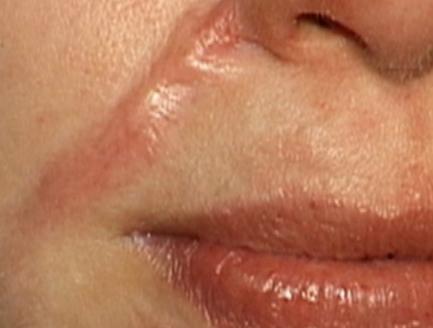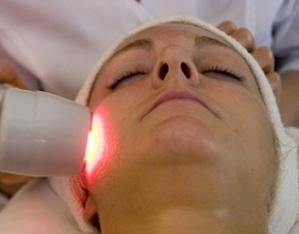Scarring is part of living
Accidents, surgery, skin disease, burns, acne, and infection are things that are common to the human experience. All of these often leave some type of scarring on a person to varying degrees. It is unlikely that and person living to the edge of five years is without some type of scarring. The skin is the largest organ system of the body and provides us with amazing protection that allows humans an advantage over other mammals on the planet. However it is greatly associated with our personal self image and sometimes scarring has adverse emotional effects.
Below are common types of scars that occur:
Flat, Pale Scars – are the most common type of scar.
They occur as a result of the body’s innate healing process. Initially, they may be red or dark and raised. After the wound heals they often become paler and flatter over time. The final appearance being in a flat, pale scar that can be nearly unoticeble. This process can take up to two years and there will always be some visible evidence of the original wound.
Hypertrophic Scars – Red or Dark and Raised
Hypertrophic scars are more common in the young and people with darker skin. Some people have an inherited tendency to this type of scarring. It is not possible to completely prevent hypertrophic scars. It is important to record this tendency as part of one’s medical history. Some scar therapies are available that may speed up the process of change from a hypertrophic scar to a flatter, paler one.
The body produces new collagen fibers at a rate which balances the breakdown of old collagen. Hypertrophic scars do this in abundance. These scars are red and thick and may be itchy or painful. They do not extend beyond the boundary of the original wound but may continue to thicken for up to 6 months. Sometimes they improve over the next one to two years. Some people complain because these types of scars can cause distress due to their appearance or the intensity of the itching. Depending on their location on the body they can restrict movement.
Keloid Scars – Red or Dark and Raised
As in hypertrophic scars, keloids are the result of an imbalance in the production of collagen in a healing wound. Unlike hypertrophic scars, keloids grow beyond the boundary of the original wound and can continue to grow indefinitely. They can also be itchy or painful and in a number of instance not improve in appearance over time.
Keloid scars can result from any type of injury to the skin, including scratches, injections, insect bites and tattoos. Anybody can get a keloid scar and they can occur anywhere on the body. However, the young and people with darker skin are more prone to this type of scarring and they are more common on certain parts of the body e.g. ears, chest, shoulders and back.
As with hypertrophic scarring, people who have developed one keloid scar are likely to be prone to this condition in the future and should alert their doctor or surgeon if they are likely to need injections or to have any form of surgery.
Sunken Scars – are recessed into the skin.
They may be due to the skin being attached to deeper structures (such as muscles) or to loss of underlying fat. They are usually the result of an injury.
Acne & Chicken Pox Scars
A common cause of sunken scarring is acne or chicken pox which can result in a pitted appearance. However, it is important to note that acne scarring is not always sunken in appearance and can even become keloid.
Stretched Scars
Stretched scars occur when the skin around a healing wound is put under tension during the healing process. This type of scarring may follow injury or surgery. Initially, the scar may appear normal but can widen and thin over a period of weeks or months. This can occur where the skin is close to a joint and is stretched during movement or may be due to poor healing due to general ill health or malnutrition.
Stretch Marks
Stretch marks develop when the skin is stretched rapidly, for example during pregnancy or the adolescent growth spurt. Initially, stretch marks appear red but become paler over a number of years.



 In recent years the use of lasers in medicine has enjoyed rapid development in medicine. Doctors and researchers are experimenting with the devices in a wide variety of procedures, like opening blocked coronary arteries and reshaping the cornea of the eye to correct poor vision, dissolving kidney stones and in scar revisioning.
In recent years the use of lasers in medicine has enjoyed rapid development in medicine. Doctors and researchers are experimenting with the devices in a wide variety of procedures, like opening blocked coronary arteries and reshaping the cornea of the eye to correct poor vision, dissolving kidney stones and in scar revisioning.  When an imbalance occurs between the anabolic and catabolic phases of the healing process in a wound somtimes more collagen is produced than the is degradation of collagen in the healing process. This results in the scar growing in all directions. The scar is elevated above the skin and remains hyperemic. This is excessive scar tissue is medically classified either as a keloid or a hypertrophic scar.
When an imbalance occurs between the anabolic and catabolic phases of the healing process in a wound somtimes more collagen is produced than the is degradation of collagen in the healing process. This results in the scar growing in all directions. The scar is elevated above the skin and remains hyperemic. This is excessive scar tissue is medically classified either as a keloid or a hypertrophic scar.